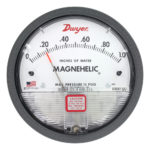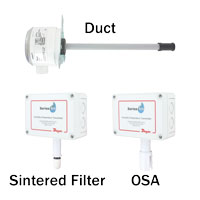 In the expansive world of modern travel, airports serve as dynamic hubs connecting people across the globe. However, amid the seamless connectivity and operational efficiency, there exists a nuanced concern—the potential health implications associated with prolonged stays in these bustling environments. From temporary discomforts to potential long-term health risks, both passengers and airport employees may encounter various challenges unique to airport spaces.
In the expansive world of modern travel, airports serve as dynamic hubs connecting people across the globe. However, amid the seamless connectivity and operational efficiency, there exists a nuanced concern—the potential health implications associated with prolonged stays in these bustling environments. From temporary discomforts to potential long-term health risks, both passengers and airport employees may encounter various challenges unique to airport spaces.
Although the COVID-19 pandemic brought concerns about the impact of the built environment on health out of the proverbial “back room,” experts have been mulling over solutions to these problems for decades. Airports are of particularly high concern as they act as something of a mini city. Jet fuel, exhaust, and other chemicals have a large environmental impact on the outdoor air quality, while carbon dioxide and volatile organic compounds (VOCs), like formaldehyde, can greatly impact the health and indoor air quality (IAQ) of airport occupants.
Airports that are designed for only functionality may inadvertently contribute to Sick Building Syndrome (SBSS). Passengers and employees might experience symptoms such as nausea, headaches, and dry skin. Sick building syndrome can be caused by poor indoor air quality, including inadequate ventilation, chemical contaminants (like VOCs emitted into the air from carpeting, cleaning supplies, or building materials), and biological contaminants (including mold, bacteria, or viruses that accumulate in ducts, humidifiers, and drain pans).
Prolonged exposure to certain airport chemicals may lead to long-term, building-related illnesses. Many studies have been done around exposure to VOCs as a potential cause of cancer and Legionnaires’ disease. Understanding these long-term consequences is crucial for formulating effective preventive measures, including air quality management.
The Role of Environmental Control Systems
Filtration Systems:

Effective filtration systems play a pivotal role in maintaining air quality within airports. High-efficiency filters capture particulate matter, allergens, and pollutants, preventing them from circulating in the indoor air and contributing to short-term discomforts or long-term health risks. Particulate build-up on the filter, as well as other obstructions and malfunctions, can decrease air flow and make the system less efficient. Monitoring the differential pressure with a pressure gage, switch, or transmitter will help to indicate when filter replacement is needed, or if damper blockages and malfunctions are present. Dwyer’s time-tested Magenehelic® gage features a durable and rugged housing with high-quality components for a long service life. The simplicity of a gage allows for quick visual indication of the status and performance of the filter, simplifying maintenance service routines.
Humidity and Temperature Control:

Optimal humidity and temperature levels are essential for the comfort and well-being of building occupants. A well-regulated environment reduces the likelihood of short-term health concerns and ensures occupant comfort. Maintaining proper humidity levels will also help to prevent unwanted mold growth. Series RHP humidity/temperature transmitters are available for outside air, room, or ducts, allowing them to be installed in various locations to maximize HVAC performance while staying inconspicuous to the average traveler. Moreover, these transmitters are also durable and low cost.
Air Quality Sensors:

Integration of air quality sensors, including those offered by Dwyer Instruments, is crucial in modern airports. These sensors monitor real-time pollutant concentrations, enabling timely responses to fluctuations in air quality. This proactive approach helps prevent both short-term discomforts and potential long-term health risks associated with poor air quality. The Series CDT carbon dioxide/temperature transmitter accurately monitors the CO2 concentration and temperature in indoor environments. These transmitters utilize a single beam dual wavelength non-dispersive infrared sensor to increase sensor accuracy and reduce the frequency of calibration.
Particulate Matter Sensors:

Often, limitations in filtration capability can result in outdoor particulate matter finding its way indoors when air handling units (AHUs) draw in fresh air. Despite the best efforts of high-efficiency filters, some outdoor particulates might escape filtration, posing potential health risks to occupants. This is where advanced sensors, such as the Series PMI, play a crucial role. These sensors can effectively detect and monitor particulate matter levels in real-time, providing insights into the quality of the indoor air. By identifying and addressing particulate matter concentrations, airports can enhance their air quality management strategies, ensuring that passengers and employees are safeguarded against potential health risks associated with outdoor pollutants infiltrating indoor spaces.
A holistic approach is necessary as we delve into the intricate web of health concerns associated with airports. Balancing operational efficiency with the well-being of passengers and airport employees is of the greatest importance. Regular assessments, adherence to safety guidelines, and ongoing research are key components in ensuring that airports remain not only functional but also safe and accommodating spaces for all individuals.
As the skies remain open for exploration, it’s important to work towards making the journey as safe and comfortable as possible. At Dwyer, we’re proud that our gages, sensors, and monitors can be used to improve the airport environment for a safer and more sustainable world.
For more information about airport environments, please read our article here.
To learn more about Dwyer Instruments, visit our website at https://dwyer-inst.com/
